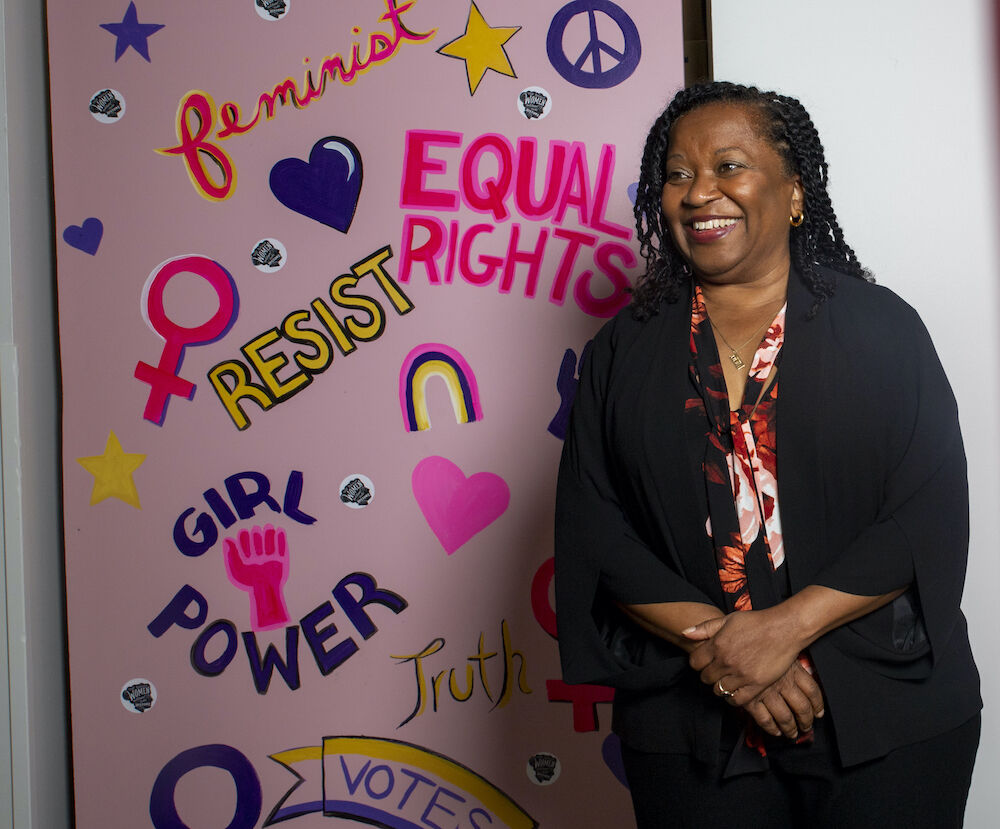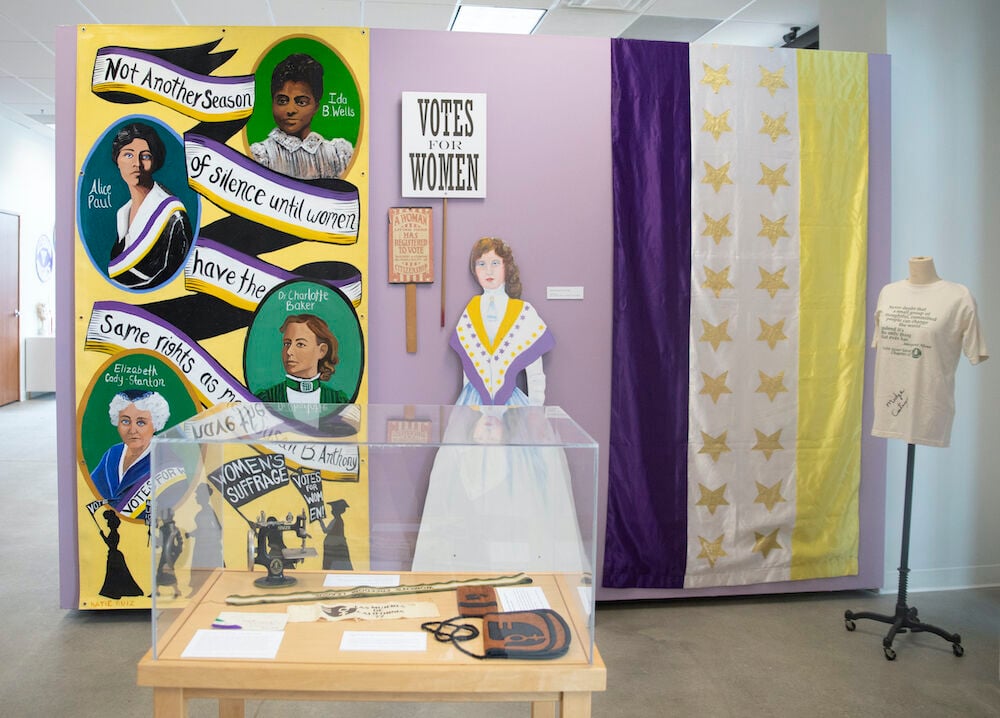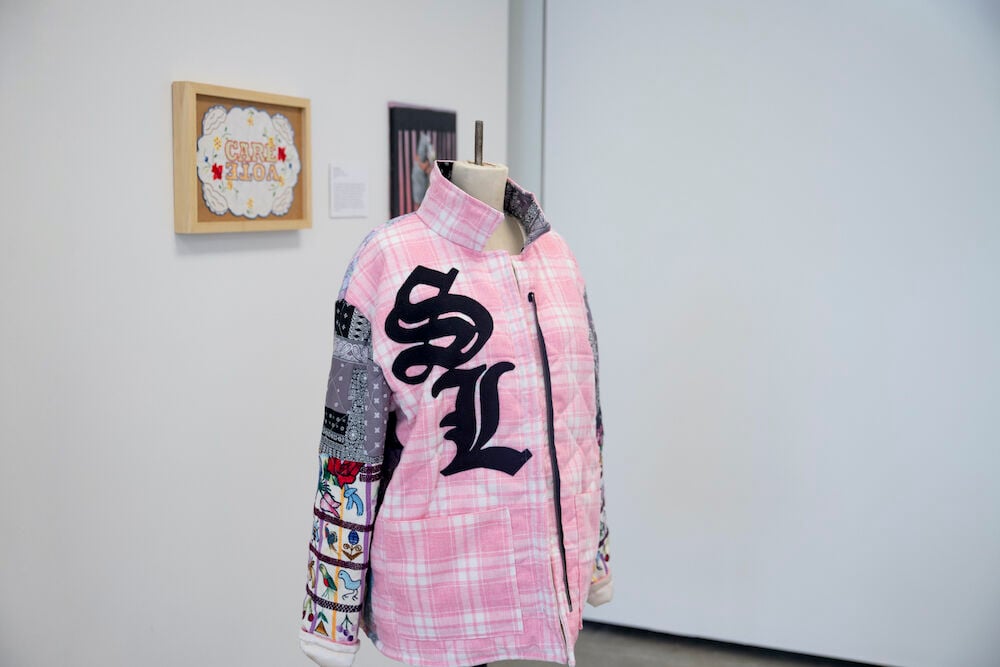
Women’s Museum Executive director Felicia Shaw
Photo by Beto Soto
To hear Felicia Shaw tell it, some soul searching had to be done. It was a little over a year into the pandemic and Shaw, along with a group of dedicated volunteers and staff, had moved the Women’s Museum of California (WMC) out of Liberty Station, a space that had been its home for eight years.
While sojourning at a shared office space inside the San Diego History Center in Balboa Park last year, the team began to discuss where the WMC could find a new home. More importantly, they needed to reflect on where its curatorial message—one steeped in the historical and present-day struggles of women’s rights and equality—could be the most helpful. “We had to take a minute to think about where we want to engage the public and have our educational programs and exhibits,” says Shaw, who became the WMC’s full-time executive director in 2020. “The Women’s Museum has been around for nearly 40 years and it’s had a long history of engaging with the public in various spaces.”
When Shaw and the staff toured a vacant space at the Jacobs Center for Neighborhood Innovation in Southeast San Diego, they knew they’d found just the place to begin a new chapter in the museum’s storied history. At the time, the space was being used as something of a community center and a food distribution site in response to the pandemic. Shaw says she saw opportunities: “I saw the potential of this space to be an anchor, a cultural hub for the Jacobs Center, as well as for the community, all grounded in the notion of telling the stories of women.”

Women’s Museum artistic director Katie Ruiz
Photo by Beto Soto
In addition to a heavy redesign and reimagining of the Jacobs Center space, complete with new windows and facade updates, the museum’s “evolution” will place new emphasis on interactivity. This will include bilingual programming, workshops, and exhibitions rooted in engagement and activism. “This is not your mother’s museum,” Shaw exclaims. “The kind where we expect people to come in and just stand in front of a wall.”
Artistic director Katie Ruiz, who joined the museum staff in January and is perhaps best known for her own brand of feminism-inspired art installations, sees the museum’s programming shifting away from the standard historical fare toward a unique mix of history, modern art, and activities that inspire a new generation of activists.

A painting representing the four waves of feminism by Katie Ruiz accompanies an installation devoted to the women’s suffrage movement
Photo by Beto Soto
“I had already built a relationship with the museum and when the more modernized vision of the space really came into play and I heard they were looking for an artistic director, I was like, ‘Oh, please let’s do that,’” says Ruiz, who previously curated exhibitions at the museum’s Liberty Station space. “I love that it’s in such alignment with not only what I do as an artist, but my activism. I always have this quote on my wall that says, ‘Give me a museum and I will fill it.’”
The WMC first began as an archive called the Women’s History Reclamation Project, started in the founder’s home in Golden Hill in 1983. It moved to Golden Hill’s Art Union Building in 1997 and Liberty Station in 2011. Shaw sees the moves as running concurrently with the various waves of feminism and activism, as well as simply going where the museum’s message is most needed. Southeast San Diego is a neighborhood that has historically been ignored when it comes to cultural programming, and Shaw and company want to correct this. “It feels natural, yes, because it was a natural evolution for us to want to move up, out, and forward in terms of our mission of connecting with people,” she says.

Items in the museum include work from local contemporary artists, such as a jacket by Sewloka (Claudia Biezunski-Rodriguez) and a Vote/Care embroidery piece by Michelle Montjoy
Photo by Beto Soto
This is evident in the new location’s inaugural exhibit (open now), Crafting Feminism: Textiles of the Women’s Movement, which looks at the way homemade artistic practices have informed feminist activism over the years. Sure, banners from the early 20th century suffrage movement, as well as contemporary pink p-hats, will be on display—but guests will also be able to make their own pins and participate in interactive workshops where children and adults can learn how to make their own art-as-protest items.
PARTNER CONTENT
“Historically, the Women’s Museum has really leaned more into the suffrage era,” Shaw explains, “and yes, that was an important part of the movement, but a lot of things happened in the ’60s and ’70s, and now we’re in that third or fourth wave of the women’s movement. There’s all the things that have happened since women got the right to vote. And now we’re in another battle. So it’s all about telling the contemporary stories with the iconography, the materials, and the elements of the past that people recognize today. We want to make it relevant to today’s people.”

















